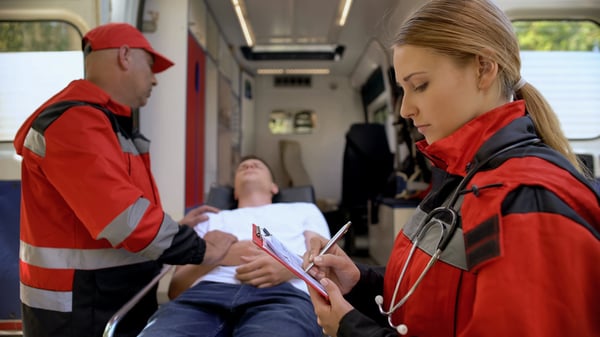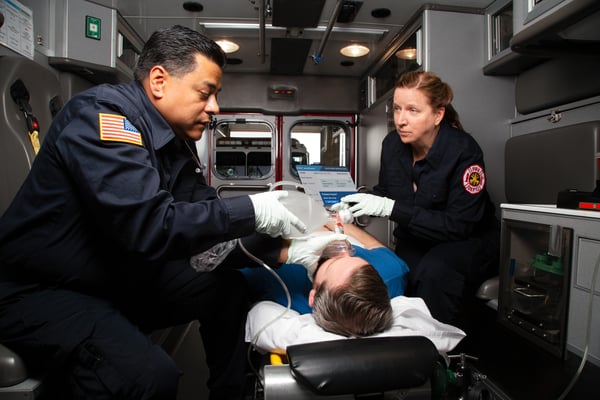News Alert: New ePCR Integration Simplifies EMS Data Management and Enables Better Care Coordination
Three Metrics Guiding Progressive Change within EMS
A look at where we’ve used data in the past and how we’re using it now to improve performance in the prehospital and in-hospital settings
Was this information valuable?

A look at where we’ve used data in the past and how we’re using it now to improve performance in the prehospital and in-hospital settings.
Written By: Tim Nowak
“Why do we do it this way?”
“What if we tried this?”
“Does this make an impact?”
Each of these questions is seeking an answer. One aims for clarification, another is based in curiosity, and another expects results. These are just a few of the questions that are asked by crews in meetings, or even in strategic planning sessions within our profession, every day. Each question seeks to understand what “this” means. And, aside from anecdotes and war stories, it seems we’re often left with data – but maybe not the proper tools or insights to analyze or use it.
The time has come for EMS agencies, individual providers, and industry stakeholders to focus on data in an effort to prove, validate, or even scrap “this”.

Over the course of our industry’s history, we’ve seen some progress in the metrics that we use to help drive our own performance (toward a profession). Some of these metrics are low-hanging fruit, while others are much more comprehensive and multi-faceted. Let’s break a few of these down, starting with what’s often right in front of us.
Response Time
“When seconds count,” it’s important that we arrive within 8:59 or whatever magical benchmark your agency might arbitrarily – or contractually – strive to uphold. While this data is very easy to obtain, its emphasis has been argued to be based upon the worst-case scenario for every situation: cardiac arrest. Yet, fire and EMS agencies throughout our country utilize this (or a similar) time benchmark to respond to calls, even if that means putting others in danger by utilizing lights and siren to do so. While this metric has helped to drive “performance” in the past, many have shown that there hasn’t necessarily been an actual benefit to its continued existence.
Unit Hour Utilization
More or the “right” amount of resources should lead to better performance, right? So, you take the number of calls that your unit runs and divide it by the total hours that it is on-duty to calculate a value. For example, six calls, divided by 24 hours equals 0.25, which is “average.” This, however, assumes that each call only takes your unit or crew one hour to complete, from start to finish. Yet, in most rural areas of our country, it may take an hour in either one-way or total drive time in general – and that’s not even including your on-scene time!
Yet, many community leaders place value on this un-weighted metric and argue that it’s as golden as the unit’s response times. While true that the unit hour utilization (UHU) does hold some baseline comparison value, it’s not as comprehensive as what our profession is looking for in order to promote real changes that truly improve our performance. Coupled with response times, UHU is a quantitative value that we try to equate to quality, but that just doesn’t add up!

Door-to-Intervention
Enter the new wave of comprehensive data analysis within our profession: measuring Door-to-Intervention (D2I) times. Unlike response times, D2I times can correlate quantitative values with qualitative benchmarks and standards. The most common way that we utilize this information is in the form of Door-to-Balloon tracking.
Now, you might ask how EMS can impact Door-to-Balloon (D2B) times within the hospital or even why EMS should care about what really is a hospital metric. D2B is just part of the big picture, but we’re often involved at the starting point.
Take, for example, this scenario: your patient begins to feel chest pain or pressure (Onset) and immediately calls 911. You arrive on scene and make First Medical Contact (FMC). You acquire a 12- or 15-lead ECG, recognize that the patient is having a heart attack, and administer aspirin (ASA) while you alert the receiving hospital of your inbound patient. Eventually, you arrive at the hospital (Door) and the patient’s care continues, hopefully toward a successful outcome.
Within this scenario alone, we’re able to abstract nine data points: Onset2FMC, Onset2B, FMC2ECG, FMC2ASA, FMC2Alert, Alert2B, FMC2D, FMC2B, and D2B. Six of these are directly related to our involvement. We can’t control the patient’s onset time, but we can provide community outreach to help improve our overall Onset2FMC times. From there, setting a benchmark for FMC2ECG, FMC2ASA, and FMC2Alert times of within 10 minutes is a great start. Remember, while we’re tracking these times to improve our own processes, we’re also tracking them to improve the patient’s outcome. After all, this is happening to them!

So, how about all this build-up to D2B times? Well, let’s say that we do our best to control all of the factors that we can on our side of things. We acquire and interpret an ECG, administer aspirin, rapidly alert the hospital, limit our on-scene times, and begin our transport to an appropriate receiving facility. For all intents and purposes, let’s say that we have two local facilities to choose from: Hospital-A (which is the closest) and Hospital-B (which is 15 minutes farther away). Considering this, let’s correlate that FMC2Arrival at Hospital-A is 30 minutes, which would make FMC2Arrival at Hospital-B 45 minutes.
Now, let’s add each hospital’s average D2B times. Hospital-A averages 45 minutes, while Hospital-B averages 20 minutes. Combining these into the equation, the FMC2B for this patient going to Hospital-A would equate to 75 minutes, while the FMC2B going to Hospital-B would only be 65 minutes. So, transporting to the closest facility may not always be the most appropriate.
Leveraging Data to Improve Performance and Patient Outcomes
Now comes the fun part. EMS can actually improve the performance of our hospitals by presenting this data to them. We can show them that situations like this could impact our transport decisions and ultimately, their patient intake! We can force process changes on their side of the equation in order to improve their performance, and more importantly, patient care. While this metric relies on times and averages (just like response times and UHU), it holds a much more comprehensive value that benefits all parties when used to make process improvements.
ZOLL offers data solutions to improve clinical, operational, and financial outcomes. From dispatch, to patient care documentation, to billing, we’ve got your EMS operations covered.
Related Posts
4 Must-have Data Points for Dispatch-Billing Alignment and Maximum Reimbursement
How STAT MedEvac Connected Device, Software, and Data Technology To Enhance QA and Elevate Care
ZOLL Pulse Blog
Subscribe to our blog and receive quality content that makes your job as an EMS & fire, hospital, or AR professional easier.
ZOLL Pulse Blog
Subscribe to our blog and receive quality content that makes your job as an EMS, fire, hospital, or AR professional easier.





